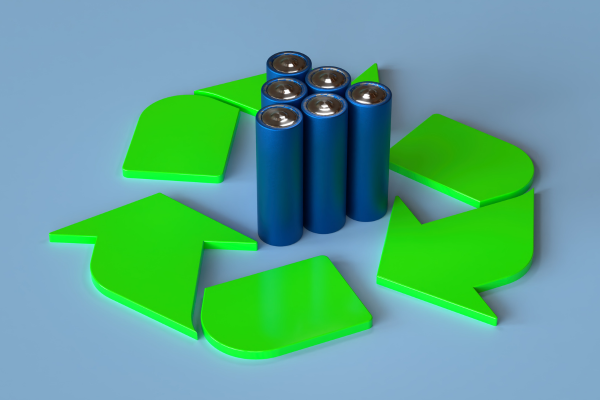Battery Recycling in Ontario
Battery Recycling Information and Tips
The Battery Recycling Process Explained
How we break down batteries and use them to make something new!

From sorting to shredding
Dismantling Batteries
- The first step in battery recycling involves dismantling the batteries to separate their individual components.
- Depending on the scale of recycling operations, this process can be done manually or through automated methods.
- During dismantling, batteries are carefully taken apart to access their internal components.
- After dismantling, the batteries undergo shredding.
- In this stage, the batteries are shredded into small pieces.
- Shredding helps break down the battery materials further, making them easier to process.

Once sorted, the materials are grouped together
Lithium-Ion Batteries
Lithium-ion batteries, found in devices like smartphones and electric vehicles (EVs), consist of various materials.
After shredding, the separated cells are further processed.
Metal Solids:
- These include copper, aluminum,
and cobalt. - These metals are valuable and can be reused in various industries.
Lithium Brine Slurry:
- This contains dissolved electrolytes and lithium
salts. - Lithium salts are essential for producing new lithium-ion batteries.
Li-Ion Fluff:
- This mixture consists of plastics and some steel.
- Plastics can be recycled, and steel can be repurposed.
Frequently Asked Questions
In Ontario, you can dispose of batteries by participating in local battery recycling programs. Many municipalities offer drop-off locations for used batteries, ensuring they are recycled safely and responsibly.
No, batteries should not be placed in the garbage as they contain hazardous materials. Proper disposal through recycling programs helps prevent environmental contamination and promotes safe handling.
Lithium battery recycling involves collecting and processing lithium-ion batteries to recover valuable materials and reduce environmental impact. Specialized facilities ensure safe recycling and prevent hazardous waste.




